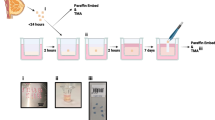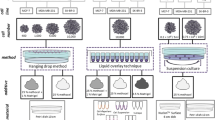Summary
Conglomerate groups of cancer cells were found in cultures made from washings obtained from the hands of surgeons, surgical instruments, the pelvic cavity and the serous surface of the rectum in 34.7 per cent of cases.
Cancer cells were cultured by special methods on a monolayer of diploid cells in tissue culture. Fifteen to 20 minutes after culturing, the cancer cells, with their high potency for growing together with diploid cells, became attached to the substrate.
Cancer cells torn away from the primary lesion at operation preserve their ability to grow in tissue cultures.
Cancer cells showed activity in heterotransplants to newborn white rats; histologically, the tumors were identical to the primary lesions in humans.
As a result of experimental data concerning carcinogenic properties of cancer cells torn away from primary lesions, and according to clinical observations of local recurrences in the anastomotic zone, around the colostomy stoma and in postoperative scars, we believe that cancer cells can cause implantation metastases after operations performed for cancer of the rectum.
Similar content being viewed by others
Author information
Authors and Affiliations
About this article
Cite this article
Rygick, A.N., Fain, S.N. & Pestovskaja, G.N. Viability of cancer cells penetrating tissues during operations for cancer of the rectum. Dis Colon Rectum 12, 351–356 (1969). https://doi.org/10.1007/BF02617748
Received:
Issue Date:
DOI: https://doi.org/10.1007/BF02617748




